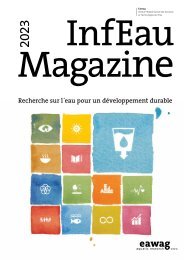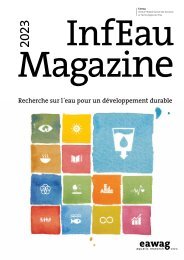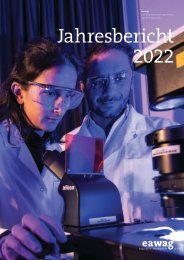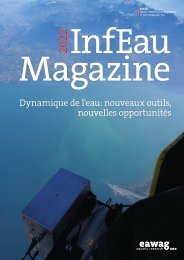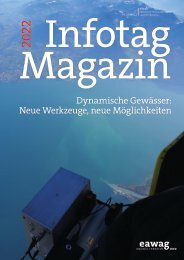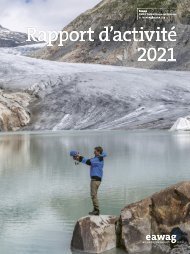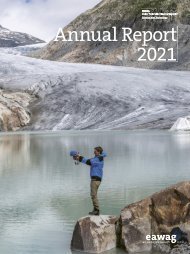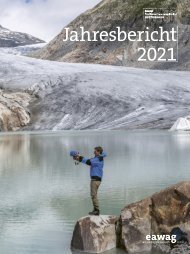Eawag Annual Report 2022
As the aquatic research institute of the ETH Domain, our research is in service of society. You can see this for yourself in our Annual Report. The annual compact review highlights the most relevant research results of the past year and shows how they were developed.
As the aquatic research institute of the ETH Domain, our research is in service of society. You can see this for yourself in our Annual Report. The annual compact review highlights the most relevant research results of the past year and shows how they were developed.
You also want an ePaper? Increase the reach of your titles
YUMPU automatically turns print PDFs into web optimized ePapers that Google loves.
RESEARCH<br />
17<br />
What the diversity of the whitefish reveals about<br />
its origins<br />
Why is there a whole spectrum of whitefish species in Switzerland, some of which<br />
differ greatly in appearance? With comprehensive genetic analyses, researchers<br />
have now found answers to these and other questions.<br />
In the picture Seven different<br />
whitefish species are found<br />
in the Lakes of Brienz and<br />
Thun alone.<br />
Oliver Selz, <strong>Eawag</strong><br />
Led by Philine Feulner, research group leader in the Fish<br />
Ecology & Evolution Department, a team of researchers<br />
from <strong>Eawag</strong> and the Universities of Bern and Edinburgh<br />
has studied the complete genomes of 99 fish belonging<br />
to 22 different whitefish species. Their analyses show<br />
that, surprisingly, the many whitefish species in the<br />
large Swiss pre-alpine lakes only developed after the<br />
last ice age – i.e. not in millions of years, but in only<br />
around 10,000 years.<br />
Diversity developed separately in each lake region<br />
The fish differ in appearance and size, but also in their<br />
prey pattern and the preferred depth in which they<br />
mate and reproduce. Large whitefish live near the<br />
shore and feed mainly on soil organisms. In the open<br />
water are the small Albeli whitefish, which eat mainly<br />
plankton. Between these two extreme forms lie the<br />
medium-sized whitefish. They draw on both sources<br />
of food to satiate themselves.<br />
The new genetic analyses confirm earlier assumptions<br />
that the diversity of whitefish evolved separately<br />
and independently in each lake group. This is because<br />
whitefish species from the same lake are closely<br />
related genetically, even if they are very different<br />
externally. And fish from different lakes, which at first<br />
glance look very similar, have more strongly deviating<br />
genetic sequences.<br />
Hybrid forms and endemic species<br />
Genetic exchange within a lake, but also between the<br />
large lakes, has led to the formation of hybrid forms. In<br />
very deep lakes, such as Lake Thun, Lake Lucerne and<br />
Lake Constance, this has favoured the emergence<br />
of unusual species that live and spawn at depths of<br />
over a hundred metres. Many of these species are<br />
endemic, i.e. they are found exclusively in the Swiss<br />
pre-alpine lakes.



